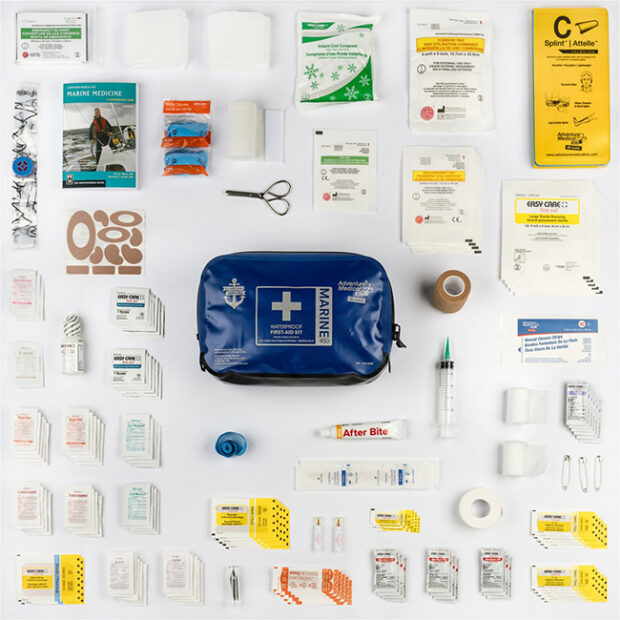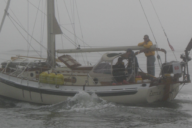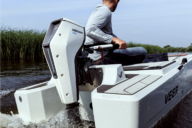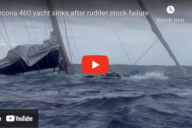In the Just Cruising column two weeks ago, I made some comments and recommendations regarding medical emergencies on cruising boats. Veteran cruiser and frequent contributor to Cruising Compass as well as to other cruising associations, Dick Stevenson had some further thoughts on preparing for a dealing with medical issues afloat. GD
Hi George,
I have some misgivings about some of the advice in your Just Cruising column with regard to medical preparedness for widely wandering cruising boats.
Take the skill of performing stitches on a wound. My take in research, consults and reading over the years is that it is better to bandage (butterfly and there are more modern bandage coverings). This is firstly because it is so hard to establish a sterile operating theater on a boat at sea. There is too much chance of sewing in the bad guys and promoting infection.
That is the most potent reservation. The other is that, like most skills, it is only useful if practiced with some degree of regularity (like putting in splices in double braid: without regular practice, the splice is likely to look like a just fed snake). Without practice and it is more likely to be botched up. Ask most cruisers when the last time they practiced/upgraded their medical knowledge/skills…
There is a similar reservation about injections with the exception of Epi-Pens. Most calls for injections can be as well (or near to) covered by medical alternatives.
Another reservation (in general) is the turning to physicians for advice/books. I have read a handful over the years and, again generally, they are overly complicated and not practical in a way that I believe the average diligent cruiser finds useful. For comparison, go to Jeffrey Isaacs’ superb, “Outward Bound Wilderness First Aid Handbook”. It speaks directly to the situation cruisers will be in in a medical emergency “Wilderness First Aid”. Physicians tend to think and write with the idea that medical apparatus is near at hand or an ambulance ride away.
And, you did not mention training, but training, to my mind, should be done by experienced people in wilderness medical intervention where access to help, and communication is limited or non-existent and evacuation may be impossible or quite dangerous. Too many first aid courses, even pretty sophisticated ones, are based on the idea that the work/training is to stabilize the victim until the EMT ambulance arrives: not the situation at sea.
And, lastly, I would strongly advocate building your own medical kit, perhaps using as template the many suggestions one can find published or the list of items in the commercial kits. This gives the skipper/crew a hands-on chance to learn about the included items: thermometer, pressure cuff, bandages, splints etc. As well as knowledge of how they are packed and placed in the bag. I know of boats where the commercial medical kit has never been opened with the excuse that they would never get the supplies back into such a well packed case.
My best, Dick Stevenson, s/v Alchemy












